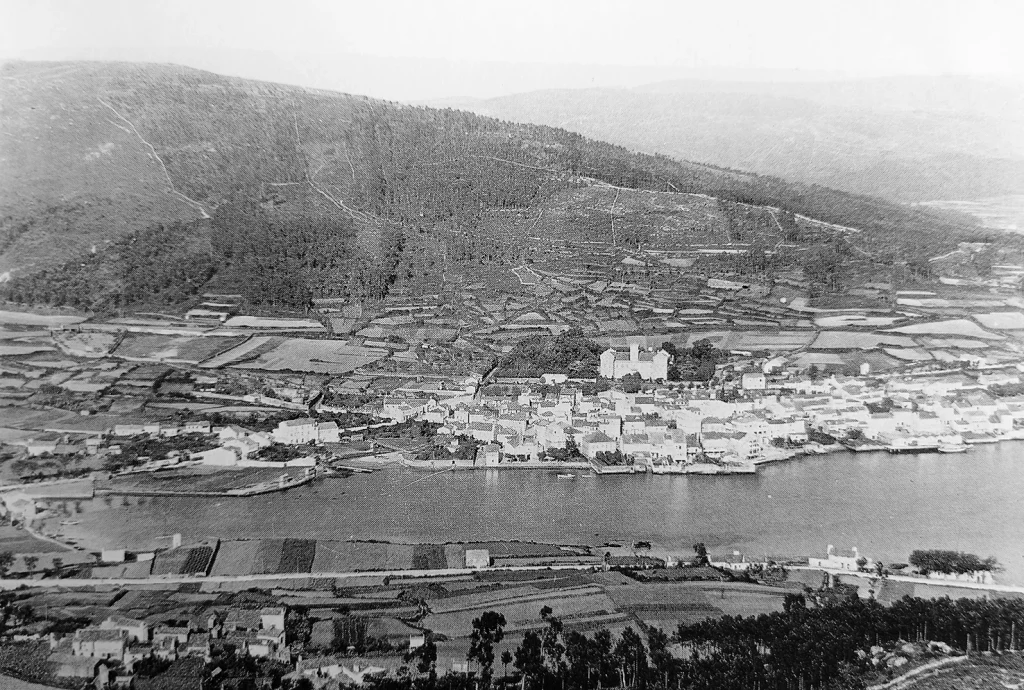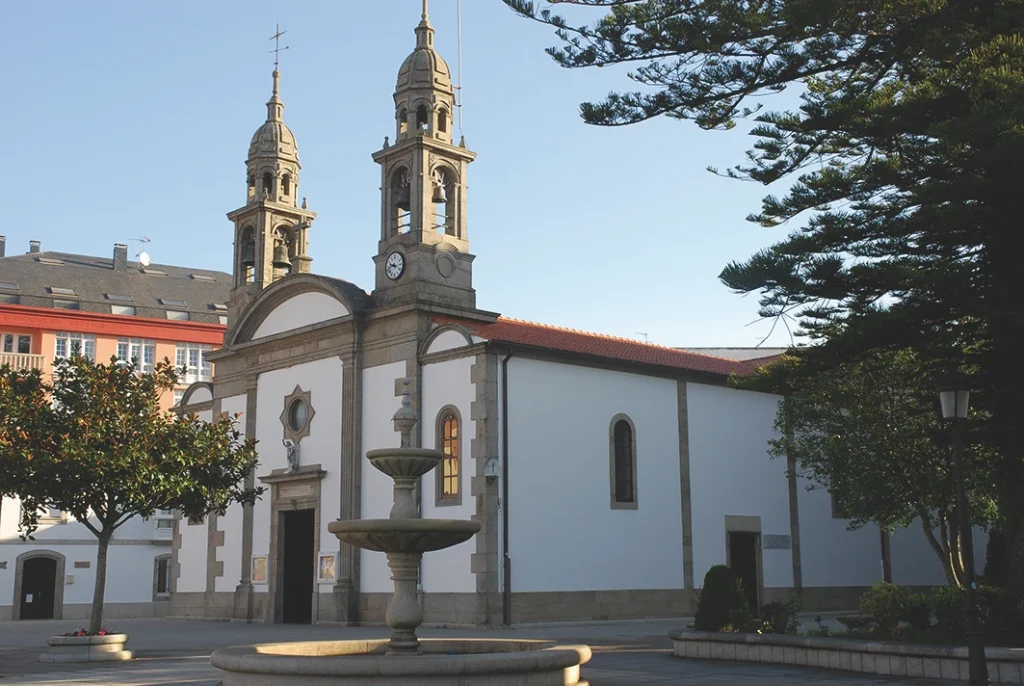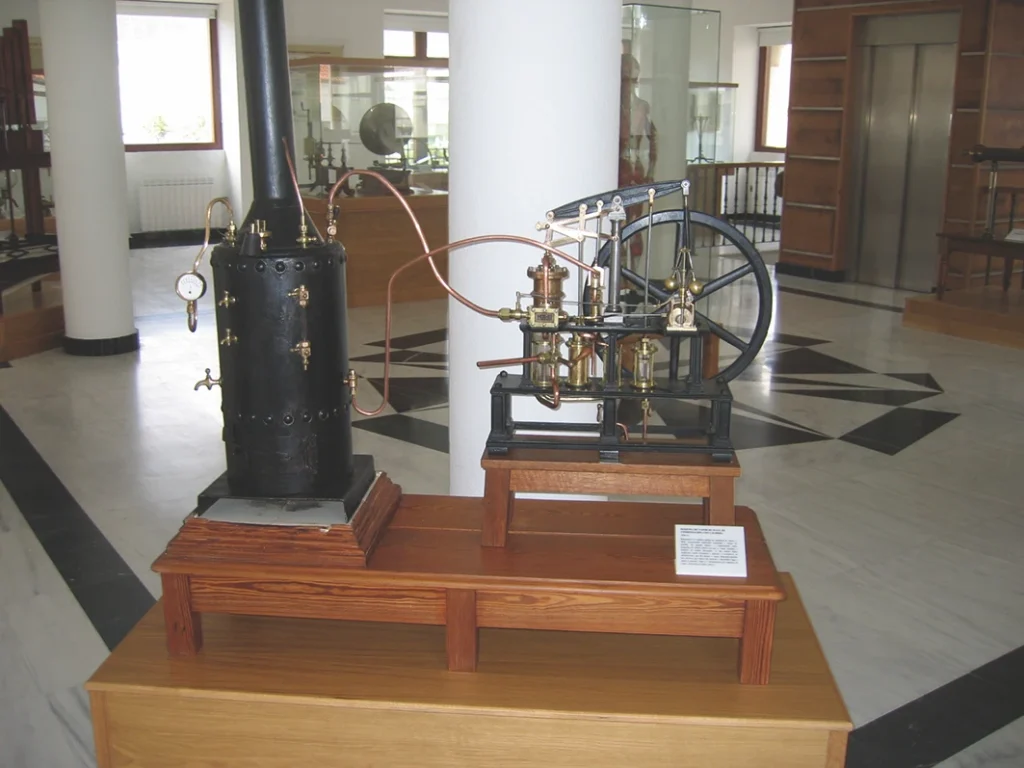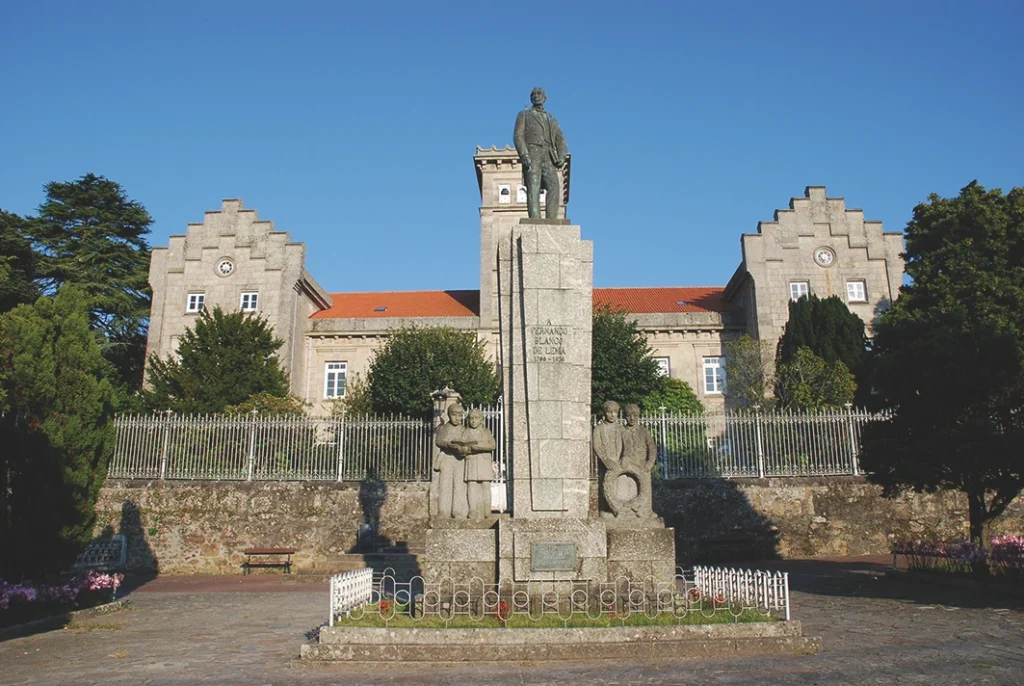History
The first records of the town date back to the 12th c., when archbishop Diego Xelmírez granted the archdeacon of Trastámara, Arias Muñiz, with the administration of an estate that included the parish of Santa María da Xunqueira in Cee.
The town may have been founded when the constant Viking and Muslim raids on the coast had diminished. The population previously lived further inland in the old villages of San Paio de Refoxos and San Pedro Mártir.

Fishing and trade were the driving forces behind the development of the port. The fish was either sold fresh in nearby villages up to Santiago, or air-dried, salted or smoked and sent to other parts of the coast in the Iberian peninsula.
Cee forms part of the Way of St James from Santiago to Fisterra. There was a hospital for pilgrims near the parish church, which already existed in the 15th c. and remained open until the early 18th c. Cee formed part of a small jurisdiction independent from Corcubión in the 17th and 18th, which was dominated by the local clergy and nobility. The highest authority was the archdeacon of Trastámara, who had his residence here.
Records from the 18th c. mention the presence of Catalan promoters at the port who introduced many changes to fishing methods. Such changes led to confrontations between local fishermen’s guilds. One of the first anti-Catalan riots in Galicia took place in Cee in 1757.
The town was devastated and the parish church burnt down during an invasion by French Napoleonic troops. The revitalised fish salting industry and increasing trade and commerce caused the town to grow in the 19th century.
A carbide factory was built in the town in the early 20th c., making the town the only industrial centre in the coastal region. Cee is now the most important economic and service centre in the south of Costa da Morte, especially after the opening of the Regional Hospital Virxe da Xunqueira.

Route on foot around the town
This route around the town starts in front of the Town Hall in the Rúa Domingo Antonio de Andrade. There is a statue dedicated to this famous local figure at the west end of the avenue. Antonio de Andrade was an architect, sculptor and one of the main artists of the Galician Baroque. He was the master builder of the cathedral of Santiago and his works include its famous clock tower.
Opposite the town hall is the parish church of Santa María da Xunqueira, which was originally built in the Gothic style, although the only remaining part of the original fabric is the apse. It underwent several changes in the mid-17th c. and was later burnt down during the French invasion of 1809. The church was later restored in the late 19th and early 20th centuries.
The interior contains the image of the Virgin of A Xunqueira, donated in 1812 by Pedro Díaz de Porrúa. Legends state that the Virgin appeared amongst reeds (“xuncos” in Galician) on the shoreline, hence her name. The most important fiestas of the town are held in her honour on 15 August.
Go along the Rúa Domingo Antonio de Andrade to the town centre in the Praza da Constitución. When you enter the plaza you’ll see the building of what was the Girls’ School and is now the museum of the Fundación Fernando Blanco, which opened its doors to the public in 2001. The scientific instruments and teaching materials used in the school are on display, along with historical and educational documents and the foundation’s pictorial and artistic collection.
The museum has two floors. The ground floor contains a history of the foundation and its work, along with its art collection and educational materials for music, drawing and agriculture. The first floor is dedicated the scientific and teaching materials used for physic, chemistry and natural history. This space is also used for temporary exhibitions.

The plaza also has some interesting houses built by the local bourgeoisie in the late 19th and early 20th centuries. The Music School, which was previously the Town Hall, can be seen in the south west part of the plaza.
Now head down the Rúa Rosalía de Castro and take the first left to the Praza da Fonte Penín, to see the Pazo do Cotón, a Baroque manor house, as the coat of arms, the landing of the outdoor stairway and the balustrades on the balconies clearly show.
Two local notables commissioned the construction of the building: Fernando Pérez and Alberta González, in the late 16th c. The present building was built in the 18th c. The name Pazo do Cotón comes from one of the last owners: José María Cotón. It now belongs to the Creus Andrade family.
The splendid coat of arms shows a tree, which may represent the Pérez family, two towers, the chequer pattern of the Bermúdez and the roundles of the Castro family. Continue along the Rúa de Arriba and turn right onto the Rúa Vázquez Queipo, until you come to the Avenida de Fernando Blanco, where you’ll see the building of the foundation, which is now a secondary school. This splendid building was designed by an architect from Madrid named Aguilar and completed in 1886. Funding for construction was provided by the philanthropist Fernando Blanco de Lema (1796-1875). The garden that surrounds the building has several interesting exotic plants.

Carry on along the avenue towards Muros, and then go along the Rúa Campo do Sacramento down to the promenade and the beach of A Concha, where the route started.